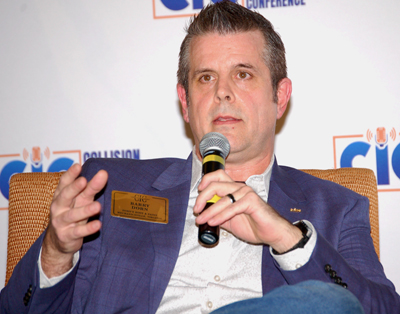As the summer comes to an end, estimating system labor times associated with evacuation and recharging of vehicle air conditioning systems with R1234yf refrigerant remain a heated issue for some in the industry.
The Database Enhancement Gateway (DEG) has received at least 40 inquiries in recent years related to that issue. Although the estimating system providers have long provided a way for anyone in the industry to submit inquiries related to missing or potentially inaccurate information in the systems, the DEG was created by a number of shop trade associations as an easier and centralized way to submit---and monitor what happens to---such inquiries.
Danny Gredinberg, DEG administrator, said the three major estimating system providers have generally said after review of the air conditioning related inquiries, no change was needed. But he pointed out the costs of the R1234yf equipment---and of the refrigerant itself---are higher than those related to earlier systems using other types of refrigerant, and the time to perform the process has changed.
“But one thing that hasn’t changed is the labor time [in the estimating systems],” Gredinberg said at a recent Society of Collision Repair Specialists (SCRS) meeting. “That has stayed the same from the beginning of time.”
Shop owner Barry Dorn of Dorn’s Body & Paint in Mechanicsville, VA, said he and one of his technicians compiled lists of the steps needed to evacuate and recharge a system with R134a refrigerant, and significantly longer lists of the steps required to evacuate and recharge a system with R1234yf refrigerant.
“We are seeing the times spent on these operations more than double the generic times the [estimating systems] are claiming that it should take,” Dorn said.
Working to Improve the Estimating Databases
The DEG overall fielded 1,020 inquiries related to the three major estimating systems in the first half of this year, putting it on pace to match last year’s total of more than 2,000. One DEG inquiry submitted in mid-April, for example, questioned the roof refinish time for the 2020 Ram 3500 in the Mitchell estimating system given the size and height of the vehicle, “requiring additional effort to go up and down to prep and refinish.” After review, Mitchell increased the refinish labor time from 2.8 hours to 4.3 hours.
Gredinberg said 55% of this year’s inquiries resulted in some change to an estimating system database, including more than 850 paint or body labor hours being added to operations, and more than $9,000 in missing parts added to the systems.
“You can see this is a useful resource to the industry,” Gredinberg said. “All we want is fair and accurate information in the systems that’s visible to both sides.”
SCRS View of Automaker Agreement
Also at the SCRS meeting, the association pushed back against several organizations that have been critical of an agreement SCRS---along with the Automotive Service Association (ASA)---recently announced with a coalition of automakers. The agreement reaffirms that “independent repair facilities shall have access to the same diagnostic and repair information that auto manufacturers make available to [their] dealer networks.”
Several organizations, which also represent industry segments beyond mechanical and collision repair shops, say that agreement lacks enforcement and does not diminish the need for federal right-to-repair legislation.
But SCRS Executive Director Aaron Schulenburg said he doesn’t have collision repairers telling him they can’t get the OEM information they need. He said SCRS believes consumers should be able to choose an independent repair shop to work on their vehicle, and those shops should continue to have access to the OEM repair information---and that’s what the agreement is all about.
“I think any [organization] that challenges or objects to that shared position between two leading repair organizations and an automaker organization should be questioned,” he said.










John Yoswick